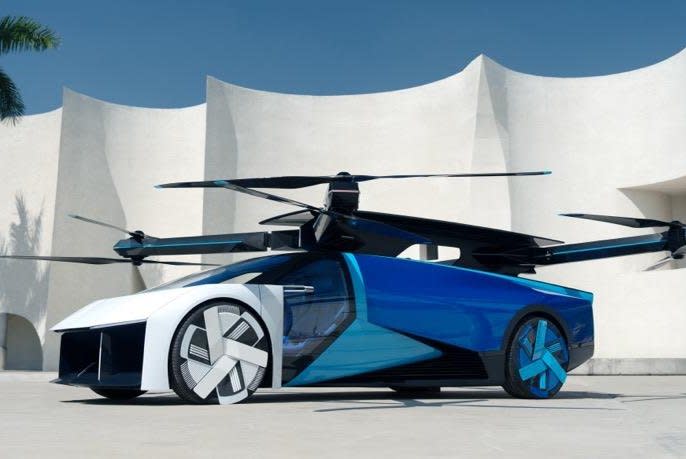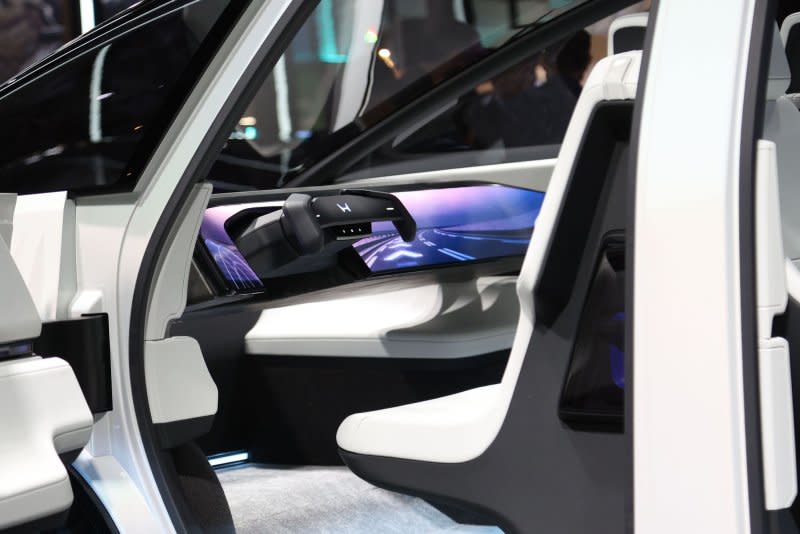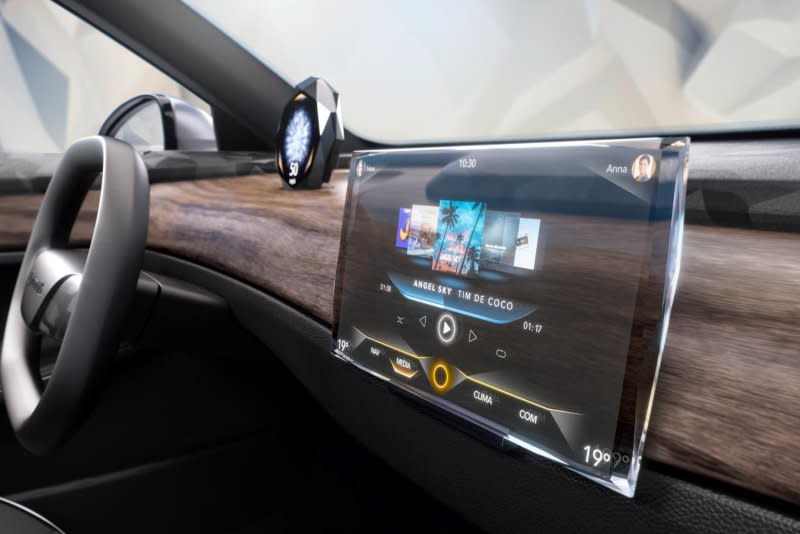Watch: CES displays future of commuting: flying cars, transparent displays, biometric ignition

Jan. 10 (UPI) -- Transparent video screens bordering on holographic were unveiled at CES on Wednesday, as the technology is set to play a major role in personal and commuter transportation options in the near future.
But it was a flying car that garnered much of the attention.
While working through regulations and safety tests this year, Chinese flying car manufacturer XPENG AEROHT had been quietly preparing a new vehicle for CES. On Wednesday, the company attracted crowds with a demonstration of its transition between land and flight modes, a first outside China.
In land mode, the eVTOL flying supercar folds its flying components inward, presenting a sleek on-road appearance. With a few quick adjustments, the vehicle can open its "arms" and take off vertically, the company said in a release.

In 2022, XPENG AEROHT successfully accomplished a test flight of a prototype weighing about 2 tons. CES attendees also got to see the company's Land Aircraft Carrier vehicle, which made its debut in late 2023.
Another innovation, Taiwanese manufacturer AUO's interactive transparent window technology, could be seen in trains and cars in the near future.

The company took home a Best of Innovation 2024 award after it unveiled a range of in-vehicle displays Tuesday. Its high-transparency Micro LED display can be installed into the side windows of vehicles, providing touch functionality for entertainment, online video conferencing and display of safety warning information.
The company also showed off its Rollable RSE video screens, which act like a window shade that people can simply pull down.
As carmakers continue to push toward autonomous vehicles, CP6 has been working on a way to make sure driverless cars are working as they should.
Its software, called ACAT (Automated-driving Car Accident-analysis Tool) allows users to quickly and easily verify that autonomous features like an automated driving system, advanced driver assistance systems and lane-keeping assist systems are working properly.
Continental Automotive Group, a worldwide vehicle manufacturer and supplier, unveiled several new technologies, including a collaboration with Swarovski Mobility. The Crystal Center Display uses a micro LED panel, which is suspended in a crystal body, creating the illusion that the images displayed are floating.
On Wednesday, the firm showed off a Face Authentication Display, a two-stage access control system based on biometric user recognition. The tech uses special camera systems mounted externally and invisibly behind the driver display console and can open and start a vehicle as soon as it detects a registered user.
The system also uses technology from biometric tech company trinamiX to detect attempted break-ins, according to a release from the company.
A camera with biometric authentication in the interior checks whether the person in the driver's seat is authorized to start the vehicle, and the system even can be used to gauge reliable attention and fatigue of the driver.
CES also gave Continental a runner-up prize for its Radar Vision Parking tech, which can assist drivers with finding a parking spot, maneuvering the car into tight spaces and having enough clearance over and around objects like sidewalks.
Designed to be compact, the radars can be mounted behind all painted bumpers, and together with cameras, they provide a redundant, seamless, 360-degree view around a vehicle.
Korean AI company BANF developed the iSensor, which uses AI, wireless charging and a three-axis accelerometer sensor to provide real-time tire data, tire tread measurement, road condition insights, wheel alignment optimization and detection of loose lug nuts.
The new technology can identify potential hazards and trigger immediate actions to mitigate risks. The system also enhances fuel efficiency by assessing wheel alignment and provides accurate predictions of fuel economy and tire lifespan.

